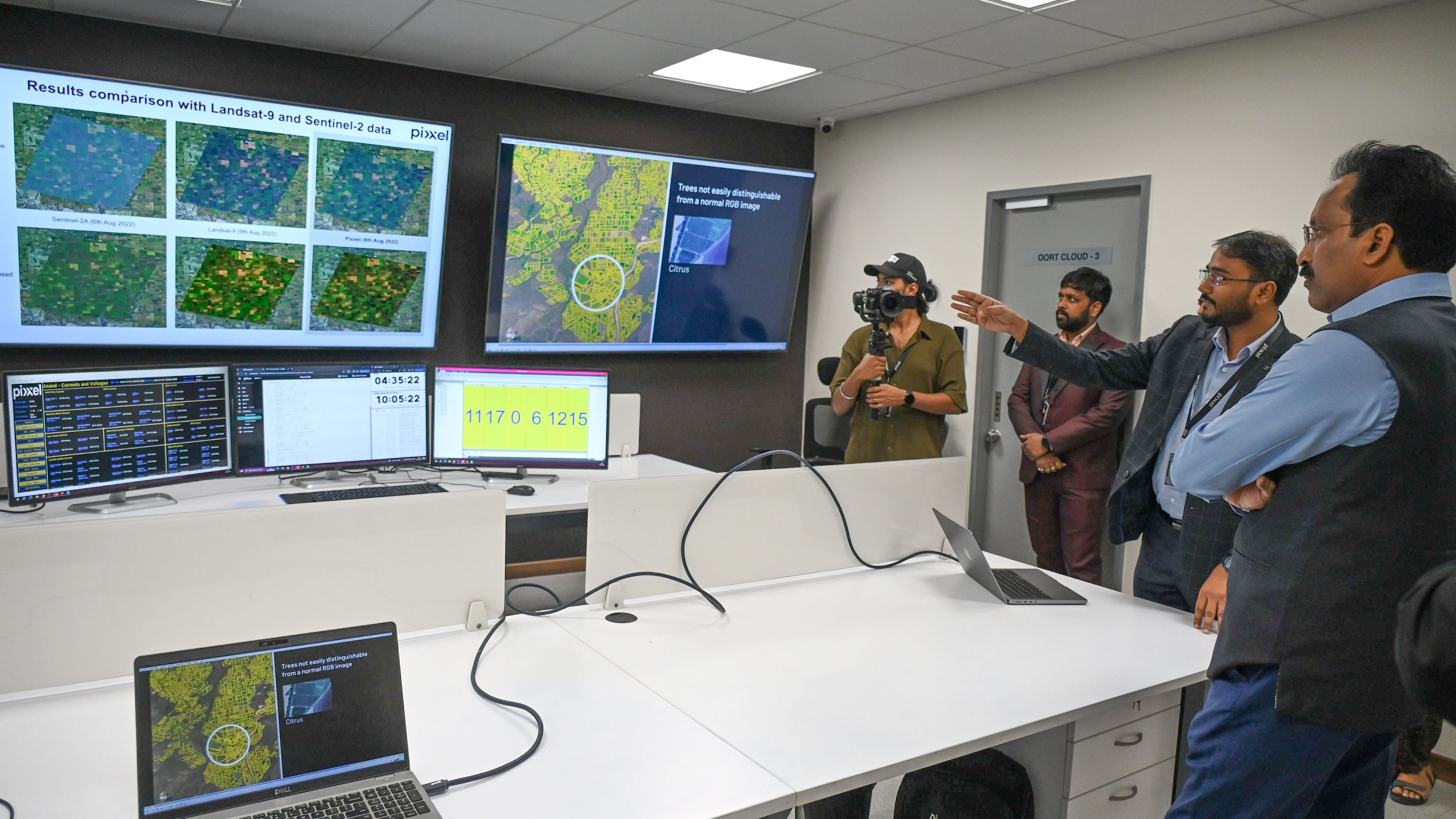
S Somanath, Chairman ISRO looking at Pixxel's AIT facility after launch at Pixxel Space India Pvt Ltd, HBR layout in Bengaluru.
Credit: DH Photo
New Delhi: The Indian Air Force (IAF) may launch satellites procured from space start-up Pixxel by mid-2025, giving a boost to its capabilities to keep vigil on the country's borders and beyond.
The IAF has signed a contract with the Bengaluru-headquartered Pixxel Space founded by young entrepreneurs Awais Ahmed and Kshitij Khandelwal of BITS Pilani, while they were pursuing higher studies.
"We should have that satellite up in space before the end of 2025, but likely we are aiming at mid-2025," Ahmed said in an interaction with PTI editors here.
He said the task of Pixxel was to manufacture the satellite and hand it over to the IAF, which will operate the spacecraft.
"In the case of the Indian Air Force for iDEX, we are not concerned with what the operations are. The operations will be mainly for looking at borders, looking at illegal testing, illegal growth and things like that. But we are not going to be operating the satellite," he said.
Innovations for Defence Excellence, an initiative of the Ministry of Defence, is aimed at creation of an ecosystem to foster innovation and technology development for defence and aerospace by engaging the industry.
Pixxel has signed a contract with IAFunder iDEX to supply miniaturised multi-payload satellites.
This contract will initiate Pixxel's efforts to develop small satellites of up to 150 kg for Electro-Optical, Infrared, Synthetic Aperture Radar, and Hyperspectral purposes.
Since its founding in 2019, Pixxel has raised 71 million dollars in funding which the company believes is adequate to cover the launch of its 24 satellites— six this year and 18 next year.
"The six satellites, the six Fireflies, we are talking about launching later this year and the Honeybees that we want to launch next year - all of the infrastructure is paid for. So right now we are just heads down building the satellites," Ahmed said.
He said the idea was to make sure that the revenues the company generated from the six satellites will sustain it in the years to come.
"The investment will be for accelerating and not surviving, which is a little different in space," Ahmed said.
Pixel has also set its eyes on the cis-lunar space - the region between the earth and the orbit around the moon.
Ahmed said the company would also like to place satellites in cic-lunar orbits to study asteroids for mineral and other precious resources that could be used to build settlements in space in the future.